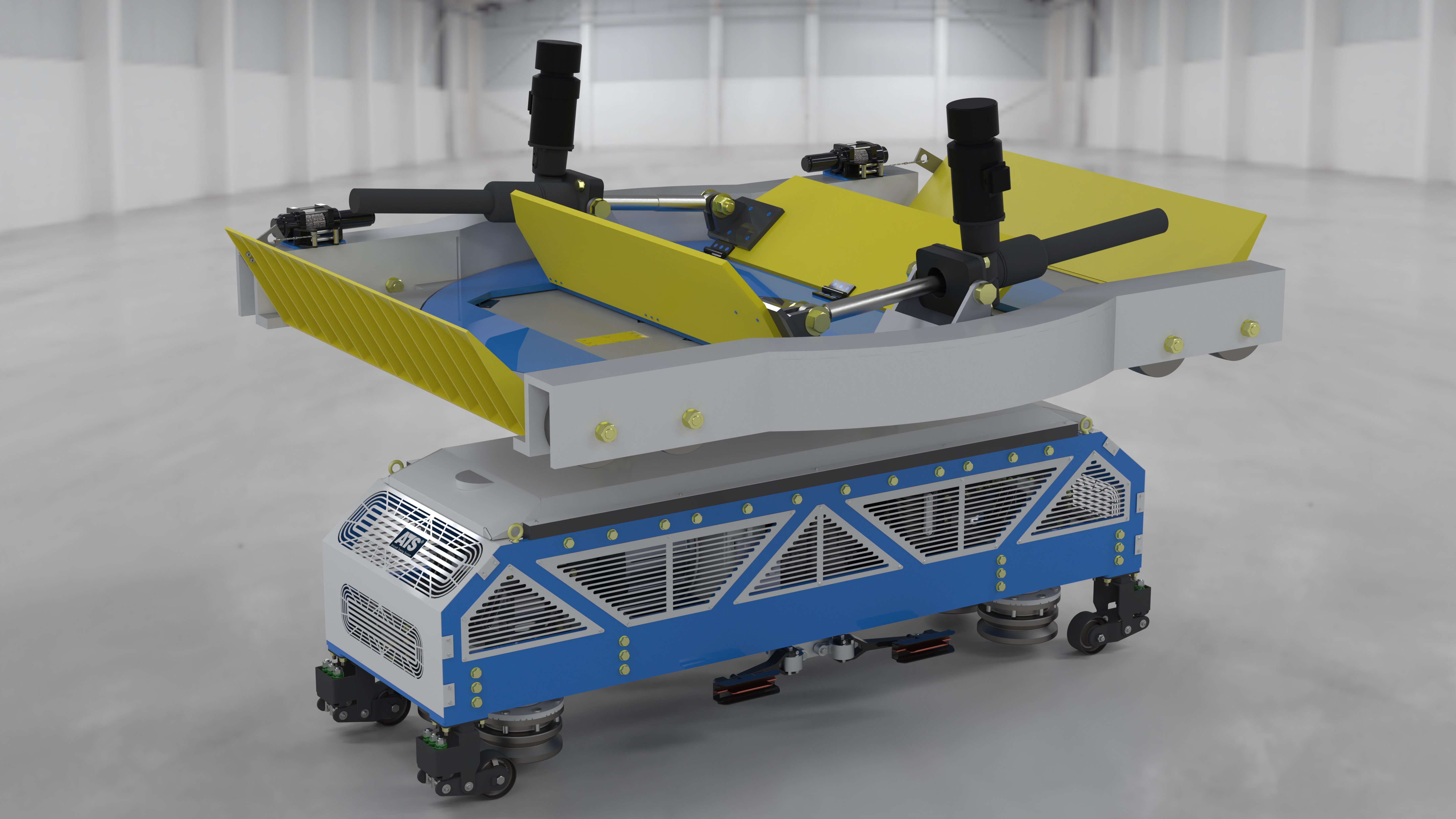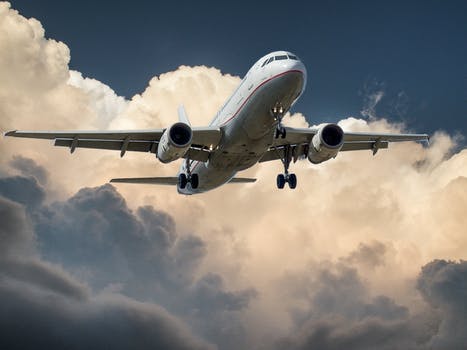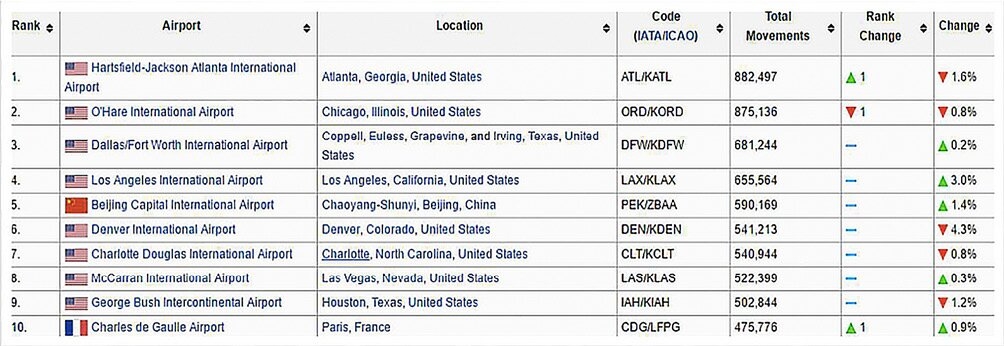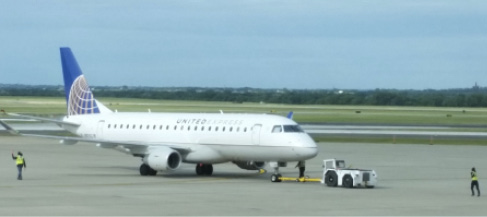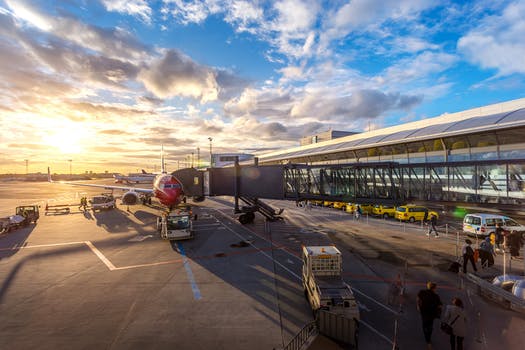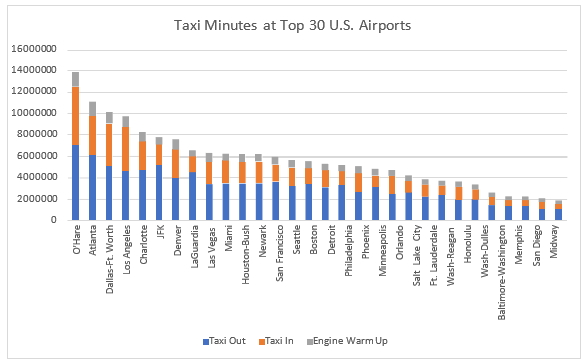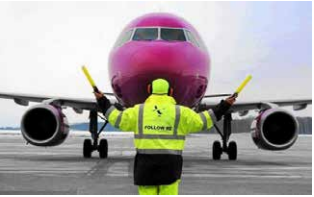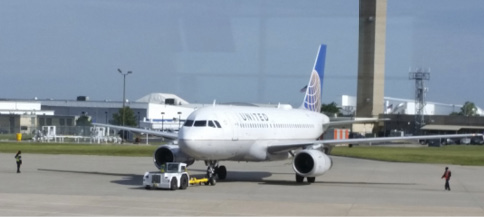AIRCRAFT TOWING SYSTEMS
General
System
Description
Aircraft Towing Systems (ATS) World Wide LLC created an innovative alternative to traditional aircraft tugging and taxiing methods. The system is designed to transport aircraft from the runway via the taxiway to the airport gates and back to the runway without the use of the main jet engines. The ATS system is fully automatic, utilizing an electric-hydraulic powered pullcar/tow dolly that rides on a monorail in a below-ground channel. The benefits of this green and sustainable system are substantial fuel savings, reduced emissions, improved air quality, safer taxiing operations by reducing collisions, decreased noise, reduced jet engine damage caused by FOD, higher airport throughput increasing capacity without adding gates, and extended aircraft engine and component life with less stress on airframes.
ATS is comprised of three sub-systems, the taxiway channel, pullcars/tow dollies and software.
PULLCAR/TOW DOLLY
The pullcar/tow dolly transports the aircraft from the runway to an airport gate and back to the runway via the ramp and taxiway. The pullcar is an electro-hydraulic powered unit, utilizing an electric car engine and hydraulic motors to move the tow dolly/pullcar and aircraft along the monorail track in an underground channel. The tow dolly is connected to the pullcar and is sized to handle aircraft from an A380/747 type aircraft to regional jets with a single unit. After driving an aircraft onto the tow dolly, the nose landing gear is automatically secured in place, and no additional actions are required by the pilot. The pilot can always overpower the system with the use of throttles or brakes in case of an emergency.
SYSTEM BENEFITS
Green and Sustainable System
- Safer Taxiing Operations – Leading to Fewer Ground Collisions
- Substantial Fuel Savings
- Improves Air Quality – Reducing Harmful Emissions
- Reduces Personnel & Equipment Around Congested Gate Area
- Operates in All Weather Conditions (Ice, Snow, Rain and Fog)
- Higher Airport Throughput (without adding gates) – Optimizing Aircraft Movements
- Decreasing Noise In and Around Airports
- Extending Aircraft Jet Engine and Component Life
- Reducing Chances of FOD in Main Jet Engines
- Less Stress on Airframes During Taxi
FASTER AIRCRAFT MOVEMENTS
ATS is designed to match current ground movement speeds in the gate, ramp and taxiway operations under normal circumstances. Currently, pushback (procedure to push aircraft backwards from the gate) is accomplished in approximately 3-4 minutes. ATS eliminates these 4 minutes since the aircraft remains attached to the pullcar while stationary at the gate. During pushback, the ATS system immediately begins moving the aircraft along the channel and does not require stopping until the aircraft is at the runway. ATS eliminates waiting for a ground crew, tug or towbar for gate operations. Attaching and detaching an aircraft occurs within a matter of moments by simply driving on or off the ATS tow dolly.
FUEL PRICES
Fuel prices have a significant impact on the amount of money spent on fuel for taxiing aircraft around airports. Significant fuel savings is one of the major advantages of implementing the ATS system. Aircraft engines are not running while taxiing in an ATS installed system.
Depending on the type and size of commercial aircraft, fuel usage can vary 5-19 gallons or 19-72 liters per minute during taxi and taxi time ranges from 16-27 minutes in the US. Prices of fuel significantly impact the amount of savings from fuel usage (see graph below).
.png)
Crude oil analysts agree the price of oil is predicted to rise in the near future. It may not reach the record levels of $140 per barrel, but even at $50-$90 per barrel, oil prices affect airline costs. As the price of crude oil increases, the ROI for utilizing ATS improves.
TAXIWAY AND RAMP AREA CHANNEL
Taxiway and ramp area channels consist of 40-50 feet (12-15 meters) long modules installed under the taxiways and ramp areas at approximately 2-6 feet (.6-2 meters) deep and 3-4 feet (1-1.2 meter) wide. Steel plates cover the channel using brushes or rubber seal systems to close the approximately 1.75 inch (4 cm) gap between the steel plates. This gap allows the connecting rods to connect the pullcar to the tow dolly. The brushes or rubber seal system help reduce potential Foreign Object Debris (FOD) from getting down in the channel. The channels are designed with drainage systems and if required, heating systems so the system operates during all types of weather conditions including rain, snow and ice.
FUEL SAVINGS
ATS is designed to transport aircraft between runway and gate without using the main aircraft engines. Depending on the type and size of aircraft, fuel usage for one minute of taxi time is approximately 5-19 gallons or 19-73 liters per minute. Average fuel usage for passenger aircraft is about 9 gallons or 35 liters per minute while taxiing . In the US at major airports the average taxi time is 16-27 minutes and 200,000 to over 900,000 aircraft movements per year.
Fuel Savings Example:
Average Fuel burned during taxi: 9 gals or 35 liters per minute
Average Taxi Time: 16 minutes
Average Aircraft Movements per year: over 500,000
Fuel Consumption:
9 gallons of fuel per minute x 16 minutes taxi time = 144 gallons of fuel per taxi
144 gallons of fuel per taxi x $3.52 per gallon = $507 per movement
500,000 movements x $507 per movement = over $254M or €244M per year in fuel savings
Note: The electrical cost to move the same aircraft with the ATS system is less than $9.00 per movement in the US, depending on the region of the country and cost of electricity.
|
Fuel Price |
$0.45 USD/gal |
€0.40 Euro/Liter |
|
Fuel Consumption |
9 gal/min |
35 L/min |
SAFETY
Each year there are several hundred aircraft collisions during taxiing operations. Fortunately, most accidents do not endanger the lives of passengers , but negatively impact the daily operations of airports and airlines. These collisions cause substantial financial losses (estimated $50B annually) and disrupt airport operations impacting passengers.
The ATS system would add an entirely new layer of safety by maintaining positive control of the aircraft creating a safer towing environment.
- Aircraft cannot deviate from the predetermined path
- Sensors detect luggage carts, fuel trucks, other aircraft & animals
- Pilot maintains control of aircraft – disconnect with brakes or throttle
- Optimizes aircraft traffic on taxi-lanes
- Stacks aircraft closer together – engines are shut off during taxi movements
In an emergency, towed aircraft are stopped immediately with notifications about the incident going to ground traffic control, pilots and other taxiing aircrafts. The system automatically reacts to emergency situations and adjusts the movements of other affected aircraft accordingly.
ATS will help eliminate most ground collisions at airports!
INCREASE IN AIRPORT CAPACITY
ATS optimizes aircraft movements, increasing airport throughput up to 30% provided there are no runway limitations.
- Aircraft are not required to stop and unhook pushback towbars
- Optimizes ground movements
- Stacks aircraft closer together in ques since engines are not running until ready for takeoff
- Increases gate utilization
- No waiting for ground crews to marshal aircraft in gate area
- Improves other movement factors
All gate, flight and taxiway operations are programmed into the ATS system to automate the current manual system.
TAXI TIME
Taxi time calculations indicate the fuel required to taxi is approximately 3%-5% of the entire fuel consumed for flight operations (take-off, flight and landing). In addition, fuel burned during taxiing results in large amounts of harmful emissions released into the atmosphere around airports. Approximately 25% of all commercial aircraft are wide-body aircraft, which consume an average of 19 gallons or 73 liters of fuel per minute during taxiing. The remaining 75% of large commercial aircraft are mid-size aircraft, which burn an average of 6 gallons or 22 liters of fuel per minute during taxiing. The overall average of passenger aircraft burns about 9 gallons or 35 liters of fuel per minute. The table below shows taxi times for the busiest US airports:
SOFTWARE
ATS has a fully integrated software system that eliminates most human touch points and errors. The system software completely orchestrates all aircraft movements from the taxiway to the airport gate and back to the runway. The ATS software suite is planned to integrate with the existing airport traffic control system software and is envisioned to be operated by the ground control personnel.
REDUCED MANPOWER AND GROUND EQUIPMENT
ATS is a fully automated system where airports can significantly reduce ground support equipment and personnel, decreasing overhead costs. Some ground support equipment, such as tug vehicles and towbars, are no longer required since aircraft are moved by ATS pullcars and tow dollies.
Current airport operations require 3-4 people and 1 tug to move every aircraft!
GATE OPTIMIZATION
Integration of the ATS ground control system allows for greater optimization of airport gates and quicker departure times. Using ATS, planes will move during their allotted times and slots. ATS greatly reduces negative consequences of human-induced errors by optimizing taxi times, gate pushback and eliminating congestion in the gate area and on taxiways. There will be no more waiting for a gate or gate crew or equipment to dock and marshal aircraft.
Sources of savings:
Eliminates tugs and towbars
Reduces manpower
Quicker aircraft movements
More efficient gate operations
Less congestion in gate area – safer work area
Increased airport capacity
DESIGN & INSTALLATION
TRAINING
DESIGN
Every design is configured to provide the optimal system layout, improve aircraft movements and increase airport capacity. The design layout is generated using an airport simulation model that portrays the optimal channel placement depending on desired traffic flow.
CHANNEL INSTALLATION
Channel modules are built off-site prior to installation on or near the airport depending on the airport. First, a channel is cut into the taxiway or ramp area, second, a trench is dug and the foundation is constructed and finally, the channel module dropped into place and secured. After each channel section is complete, the taxiway can be used for normal airport operations until the entire ATS system installation is complete and operational.
INSTALLATION COST ESTIMATE
Implementing an ATS system by airports will require significant capital investment and operating capital for system maintenance. The cost to install a Full Airport Configuration is listed in the chart below. These are approximate numbers that will vary from airport to airport depending on the installation requirements, environmental conditions, and airports requirements.
|
Installation Estimates |
USD |
Euro |
|
Cost per 1 linear meter |
|
€2,800 |
|
Cost per linear foot |
$1000 |
|
|
1 ATS pullcar/tow dolly |
$250,000 |
€240,000 (approx.) |
|
Annual Mx cost (% of total system) |
4% |
4% |
OPERATING PARAMETERS
ATS system has a very high rate of return on investment (ROI) after installing the system. Main parameters influencing the ROI are as follows:
Fuel consumption
Number of flight movements
Taxiing time
Length of taxiways
Traffic patterns
Number of gates
These parameters vary for each airport and have a significant impact on the ROI.
PULLCAR/TOW DOLLY INSTALLATION
Pullcars and tow dollies are built off-site at a permanent manufacturing facility and delivered to the airport as the channel modules are installed. Pullcars and tow dollies are installed into the channel as required.
ATS OPERATIONS AND MAINTENANCE
ATS is a fully automated system operated by airport personnel through the system software and use of sensors and other technologies on the pullcars and tow dollies to help transport aircraft around airports. A small number of employees depending on the size of the airport is all that is required to operate the entire ATS system. The ATS system is maintained by a like number of employees varying by size of the airport. Maintenance includes software updates, monitoring the track system and keeping the pullcars and tow dollies in top operating condition. The ATS channel, pullcars, and tow dollies will require periodic inspections and maintenance depending on usage and time intervals. Maintenance personnel are trained to manually detach aircraft from the tow dolly in case of emergency and transport aircraft by traditional means. Prior to installation, ATS will work with airport operators to determine the recommended numbers of spare parts, tools and support equipment required to operate and maintain the ATS system.
NO AIRCRAFT MODIFICATIONS REQUIRED
Aircraft do not require any modifications to operate in the ATS system.
INSTALLATION
Installation is accomplished using a modular installation strategy, which helps minimize airport downtime. Taxiway channels are constructed on-site then installed during airport downtimes such as the middle of the night. This allows taxiway and gates to return to normal operations in between installations. Most European countries have flights prohibited from 2300 to 0500 and in the US this time frame varies depending on the airport. During this downtime in airport operations, up to 250 meters or about 300 feet of taxi channel can be installed. After the downtime installation of the channel, the airport can return to normal operations even though the ATS system is not yet operational.
SOFTWARE INTEGRATION
ATS will partner with a software provider to develop the unique software required for each airport. The software partner will customize and work with the airport to ensure the system meets all the airport requirements and FAA standards. Software integration is planned late in the installation project schedule in order to minimize disruptions to airport operations.
ENVIRONMENTAL PROTECTION
By reducing harmful emissions, ATS will help to improve the environment. The global use of ATS could also play an especially important role in improving the environment worldwide. Airports can apply for government grants for environmental protections by implementing ecological-improvement systems such as ATS. The emission reductions may be monetized by converting the savings into emission credits and selling them to companies paying fines for emission violations.
Significant reduction in aircraft fuel consumption, due to not operating engines during taxi under ATS, translates to dramatic reductions in harmful emissions emitted into the atmosphere. They are as follows:
Carbon Monoxide
Carbon Dioxide
Hydrocarbon
Nitric Oxide
The table below shows savings in emissions of different harmful substances:
|
Harmful Substance Consumption |
Emission from aircraft (oz/gal) |
Emission from aircraft (g/L) |
|
Hydrocarbon |
0.06 |
1.71 |
|
Carcinogenic Nitric Oxide |
0.16 |
4.60 |
|
Carbon Monoxide |
0.73 |
20.62 |
|
Carbon Dioxide |
0.13 |
3.70 |
FUEL PRICES
One of the major advantages of implementing the ATS system for aircraft transport at an airport is significant fuel savings. Depending on the type and size of aircraft, fuel usage for 1 minute of taxiing is 5 to18 gallons (20 to 70 liters) per minute. Average fuel usage for passenger aircraft is 9 gallons (35 liters) per minute while taxiing. Aircraft engines (on medium and large airfields) burn an average 9 gallons (35 liters) of fuel/minute during takeoff. For example, taxi time at Frankfurt Airport averages 16 minutes per flight, which translates to burning approximately 148 gallons (560 liters) of fuel on every aircraft movement. Utilizing the ATS system allows the aircraft to power down engines shortly after landing and conversely, aircraft are not required to use their aircraft engines until ready for takeoff. Pilots perform the required engine run-up and preflight systems checks prior to takeoff. Prices of fuel have a significant impact on the amount of savings from fuel usage; see graph below.
.png)
Crude oil analysts agree the price of oil is predicted to rise soon. It may not reach the record levels of $140 per barrel, but even at $50-$90/barrel, oil prices affect airline costs. With each price increase of crude oil, the ROI for utilizing ATS gets shorter.
SYSTEM TRAINING
ATS World Wide offers an array of training options for airport personnel, including the use of a customized simulated system, on-site ATS expertise and classroom training.
DETACHING FROM ATS DURING TRANSPORT
At any time during ATS operations, the pilot or ground controller can detach the aircraft from ATS in approximately 45 seconds or less. The pilot can overpower the ATS system through the use of the aircraft brakes or throttles at his or her discretion in case of emergency. After the aircraft detaches from the pullcar the aircraft can move under its own power or be towed by traditional means. This event has no impact on other aircraft operating in the ATS system. All other aircraft in the system will receive an alert regarding the detaching event and the system will continue to operate and optimize all other aircraft movements.

